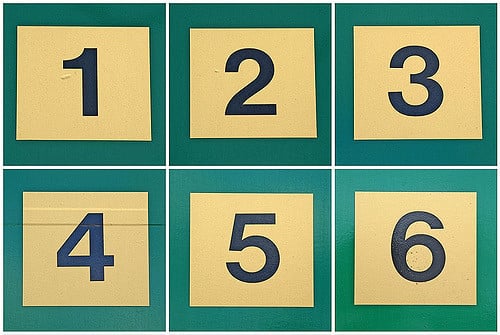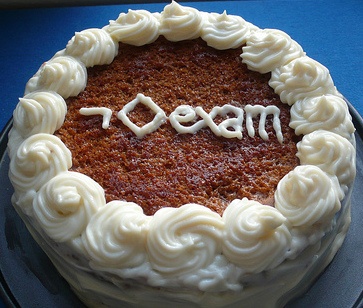
Just as with most essays, the major secret to excelling on the SAT essay is to pre-plan the examples and evidence you want to use.
"But wait!" I hear you cry. "Can you do that on the new SAT essay? Isn’t the point of the essay that you’re supposed to be using information from the passage in your answer, which you don’t know about ahead of time?"
The answer: Yes and no. While the specifics of each example will obviously change, depending on the passage, the types of examples you choose to discuss (and the way you explain each example builds the author’s argument) can be defined, and thus prepared for, ahead of time.
In this article, we give you 6 good SAT essay examples you’ll be able to find in nearly every prompt the SAT throws at you. By assembling a collection of these reliable types of evidence that can be used to answer most prompts, you'll cut down on planning time and significantly increase the amount you can write, making you able to walk into every SAT essay confident in your abilities.
feature image credit: 1 to 9 mosaic, cropped/Used under CC BY-NC-SA 2.0.
UPDATE: SAT Essay No Longer Offered
In January 2021, the College Board announced that after June 2021, it would no longer offer the Essay portion of the SAT (except at schools who opt in during School Day Testing). It is now no longer possible to take the SAT Essay, unless your school is one of the small number who choose to offer it during SAT School Day Testing.
While most colleges had already made SAT Essay scores optional, this move by the College Board means no colleges now require the SAT Essay. It will also likely lead to additional college application changes such not looking at essay scores at all for the SAT or ACT, as well as potentially requiring additional writing samples for placement.
What does the end of the SAT Essay mean for your college applications? Check out our article on the College Board's SAT Essay decision for everything you need to know.
Why You Can Prep SAT Essay Examples Before Test Day
The SAT essay prompts have several important things in common:
- They’re all passages that try to convince the reader of the veracity of the author’s claim
- They’re all around the same length (650-750 words)
- They’re all meant to be analyzed and written about in a relatively short period of time (50 minutes)
This means that you can have a pretty good idea ahead of time of what types of argument-building techniques you might see when you open the booklet on test day.
The main techniques the author uses aren't going to be overly complex (like the first letter of every word spelling out a secret code), because you just don’t have the time to analyze and write about complex techniques. Because of that, you can prepare yourself with SAT essay examples that’ll be likely found across persuasive passages about many different issues.
Naturally, for each passage you're going to want to play to its particular strengths—if there are a lot of facts/statistics, make sure to discuss that; if it dwells more on personal anecdotes/appeals to emotion, discuss those. However, if you struggle with analysis in a short period of time, memorizing these categories of examples ahead of time can give you a helpful checklist to go through when reading the SAT essay prompt and point you in the right direction.
Below, we've chosen two examples of evidence, two examples of reasoning, and two examples of stylistic/persuasive elements you can use as stellar evidence to support your thesis.
For each example below, we also show you how you can use the type of evidence to support your thesis across a range of prompts. This flexibility should prove to you how effective pre-planned examples are.
So, without further ado, onto our list of multipurpose support for any SAT Essay prompt.
Examples of Evidence
The most basic way author builds an argument is by supporting claims with evidence. There are many different kinds of evidence author might use to support her/his point, but I'm just going to discuss the two big ones I've seen in various official SAT Essay prompts. These two types of evidence are Facts and Statistics and Anecdotes.
Example Type 1: Facts and Statistics
Employing statistics and facts to bolster one's argument is one of the most unassailable methods authors can use to build an argument. This argument-building technique is particularly common in essays written about scientific or social studies-related topics, where specific data and facts are readily available.
How Can You Identify It?
Statistics usually show up in the form of specific numbers related to the topic at hand—maybe as percents, or maybe as a way to communicate other data.
Here are a couple of examples of statistics from an official SAT essay prompt, "Let There Be Dark" by Paul Bogard:
Example: 8 of 10 children born in the United States will never know a sky dark enough for the Milky Way
Example: In the United States and Western Europe, the amount of light in the sky increases an average of about 6% every year.
Factual evidence can also be in the form of non-numerical information. Often, you'll see facts presented with references to the research study, survey, expert, or other source from which they're drawn. Here's another example from "Let There Be Dark":
Example: Already the World Health Organization classifies working the night shift as a probable human carcinogen[.]
Why Is It Persuasive?
Facts and statistics are persuasive argument building techniques because the author isn't just making up reasons for why his/her argument could possibly be true—there's actually something (data, research, other events/information) that backs up the author's claim.
In the case of the examples above, Bogard presents specific data about issues with light pollution (8 in 10 children won't be able to see the Milky Way, light in the sky increases 6% annually) to back up his statements that light pollution is real, then goes on to present further information that indicates light pollution is a problem (working the night shift puts humans at risk for cancer).
By presenting information and facts, rather than just opinion and spin, Bogard empowers the reader to connect the dots on her own, which in turn gives the reader ownership over the argument and makes it more persuasive (since the reader is coming to the same conclusions on her own, rather than entirely relying on Bogard to tell her what to think).
Example Type 2: Anecdotes
Another form of evidence that is often used as an alternative to actual facts or statistics is the anecdote. This type of evidence is most often found in speeches or other sorts of essay prompts that are written as a personal address to the reader.
How Can You Identify It?
An anecdote is a short story about a real person or event. When an author discusses own personal experience or personal experience of someone they know or have heard of, that's anecdotal evidence.
Here's an example of (part of) an anecdote from an official SAT essay prompt that was adapted from a foreword by former U.S. President Jimmy Carter:
One of the most unforgettable and humbling experiences of our lives occurred on the coastal plain. We had hoped to see caribou during our trip, but to our amazement, we witnessed the migration of tens of thousands of caribou with their newborn calves. In a matter of a few minutes, the sweep of tundra before us became flooded with life, with the sounds of grunting animals and clicking hooves filling the air. The dramatic procession of the Porcupine caribou herd was a once-in-a-lifetime wildlife spectacle. We understand firsthand why some have described this special birthplace as “America’s Serengeti.”
Why Is It Persuasive?
Even though anecdotes aren't statistics or facts, they can be powerful because it’s more relatable/interesting to the reader to read an anecdote than to be presented with dry, boring facts. People tend to put more faith in experiences if they can personally connect with the experiences (even though that doesn't actually affect how likely or not a statement is to be true).
In the example above, rather than discussing the statistics that support the creation of wildlife refuges, Jimmy Carter instead uses an anecdote about experiencing the wonder of nature to illustrate the same point—probably more effectively.
By inviting the reader to experience vicariously the majesty of witnessing the migration of the Porcupine caribou, Carter activates the reader's empathy towards wildlife preservation and so makes it more likely that the reader will agree with him that wildlife refuges are important.

Examples of Reasoning
All authors use reasoning to some extent, but it’s not always a major part of how the author builds her/his argument. Sometimes, though, the support for a claim on its own might not seem that persuasive—in those cases, an author might then choose to use reasoning to explain how the evidence presented actually builds the argument.
Example Type 3: Counterarguments and Counterclaims
One way in which an author might use reasoning to persuade the reader to accept the claim being put forward is to discuss a counterargument, or counterclaim, to the author's main point. The discussion (and subsequent neutralization) of counterarguments is found in prompts across all subject areas.
How Can You Identify It?
A counterargument or counterclaim is simply another point of view that contradicts (either fully or partially) the author's own argument. When "some might claim," "however," or other contrast words and phrases show up in an essay prompt, the author is likely presenting a counterclaim.
Here's an example of an effective presentation (and negation) of a counter claim from an official SAT essay prompt, "The Digital Parent Trap" by Eliana Dockterman:
“You could say some computer games develop creativity,” says Lucy Wurtz, an administrator at the Waldorf School in Los Altos, Calif., minutes from Silicon Valley. “But I don’t see any benefit. Waldorf kids knit and build things and paint—a lot of really practical and creative endeavors.”
But it’s not that simple. While there are dangers inherent in access to Facebook, new research suggests that social-networking sites also offer unprecedented learning opportunities.
Why Is It Persuasive?
So how does bringing up an opposing point of view help an author build her argument? It may seem counterintuitive that discussing a counterargument actually strengthens the main argument. However, as you can see in the brief example above, giving some space to another point of view serves to make it seem as if the discussion’s going to be more “fair.” This is still true whether the author delves into the counterargument or if the author only briefly mentions an opposing point of view before moving on.
A true discussion of the counterargument (as is present in Dockterman's article) will also show a deeper understanding of the topic than if the article only presented a one-sided argument. And because the presence of a counterargument demonstrates that the author knows the topic well enough to be able to see the issue from multiple sides, the reader's more likely to trust that the author's claims are well-thought out and worth believing.
In the case of the Dockterman article, the author not only mentions the opposite point of view but also takes the time to get a quote from someone who supports the opposing viewpoint. This even-handedness makes her following claim that "it's not that simple" more believable, since she doesn't appear to be presenting a one-sided argument.
Example Type 4: Explanation of Evidence
In some cases, the clarity with which the author links her evidence and her claims is integral to the author's argument. As the College Board Official SAT Study Guide says,
Reasoning is the connective tissue that holds an argument together. It’s the “thinking” — the logic, the analysis — that develops the argument and ties the claim and evidence together."
How Can You Identify It?
Explanation of evidence is one of the trickier argument-building techniques to discuss (at least in my opinion), because while it is present in many essay prompts, it isn't always a major persuasive feature. You can pretty easily identify an author's explanation of evidence if the author connects a claim to support and explains it, rather than just throwing out evidence without much ceremony or linking to the claim; however, whether or not the explanation of the evidence is a major contributing factor to the author's argument is somewhat subjective.
Here's a pretty clear instance of a case where an author uses explanations of each piece of evidence she discusses to logically advance her argument (again from the Dockterman passage):
And at MIT’s Education Arcade, playing the empire-building game Civilization piqued students’ interest in history and was directly linked to an improvement in the quality of their history-class reports.
The reason: engagement. On average, according to research cited by MIT, students can remember only 10% of what they read, 20% of what they hear and 50% of what they see demonstrated. But when they’re actually doing something themselves—in the virtual worlds on iPads or laptops—that retention rate skyrockets to 90%.
This is a main reason researchers like Ito say the American Academy of Pediatrics’ recommendation of a two-hour screen-time limit is an outdated concept: actively browsing pages on a computer or tablet is way more brain-stimulating than vegging out in front of the TV.

Why Is It Persuasive?
Unfortunately, the explanation the Official SAT Study Guide gives for how to discuss an author's "reasoning" is a little vague:
You may decide to discuss how the author uses (or fails to use) clear, logical reasoning to draw a connection between a claim and the evidence supporting that claim.
But how exactly you should go about doing this? And why is it persuasive to clearly explain the link between evidence and claim?
In general, when an author explains the logic behind her argument or point, the reader can follow along and understand the author’s argument better (which in some cases makes it more likely the reader will agree with the author).
In the Dockterman example above, the author clearly lays out data (Civilization leads to improvements in history class), a claim (this is because of engagement with the game and thus the subject material), provides data that back up that claim (retention rate skyrockets when students do things for themselves), and links that smaller claim to a larger concept (actively browsing pages on a computer or tablet is way more brain-stimulating than vegging out in front of the TV). This clear pattern of data-explanation-more data-more explanation enables the reader to follow along with Dockterman's points. It's more persuasive because, rather than just being told "Civilization leads to improvements in history" and having to take it on faith, the reader is forced to reenact the thinking processes that led to the argument, engaging with the topic on a deeper level.
Examples of Stylistic/Persuasive Elements
This final category of examples is the top layer of argument building. The foundation of a good argument is evidence, which is often explained and elucidated by reasoning, but it is often the addition of stylistic or persuasive elements like an ironic tone or a rhetorical flourish that seals the deal.
Example Type 5: Vivid Language
Vivid language is truly the icing on the persuasive cake. As with explanations of evidence, vivid language can be found across all topics of essay prompts (although it usually plays a larger role when the passage is lacking in more convincing facts or logic).
 Modal logic honey cake, cropped/Used under CC BY-NC-SA 2.0.
Modal logic honey cake, cropped/Used under CC BY-NC-SA 2.0.
How Can You Identify It?
Vivid language is pretty easy to spot—it shows itself in similes, metaphors, adjectives, or any words that jump out at you that don’t seem to have purely functional purposes. Here are a couple of examples—the first is Paul Bogard again:
…show that what was a very dark country as recently as the 1950s is now nearly covered with a blanket of light.
This example is relatively restrained, using the metaphor of "a blanket of light" to add emphasis to Bogard's discussion of light pollution. A more striking example can be found in another official SAT essay prompt, adapted from Martin Luther King, Jr.'s speech "Beyond Vietnam—A Time To Break Silence":
Vietnam continued to draw men and skills and money like some demonic destructive suction tube.
Why Is It Persuasive?
Vivid language is an effective argument building device because it puts the reader in the author’s shoes and draws them into the passage. If used in moderation, vivid language will also make the topic more interesting for the reader to read, thus engaging them further.
In the excerpt taken from Martin Luther King Jr.'s speech above, the phrase "demonic destructive suction tube" is startling and provocative, meant to rouse the audience's indignation at the injustice and waste of the Vietnam war. If King had left out the second part of the sentence and only said, "Vietnam continued to draw men and skills and money," his point would not have had as big of an impact.
Example Type 6: Direct Addresses and Appeals to the Reader
The last category I'll be discussing in this article are direct addresses and appeals to the reader. These stylistic elements are found across all sorts of different passage topics, although as with the previous category, these elements usually play a larger role when the passage is light on facts or logic.
How Can You Identify It?
Direct addresses and appeals to the reader are wordings or other stylistic devices specifically designed to provoke a response (often emotional) in the reader. This category covers many different elements, from appeals to emotion to rhetorical questions. Here's an example of an appeal to emotion, taken again from Martin Luther King, Jr.'s speech:
Perhaps a more tragic recognition of reality took place when it became clear to me that the war was doing far more than devastating the hopes of the poor at home. It was sending their sons and their brothers and their husbands to fight and to die in extraordinarily high proportions relative to the rest of the population.
And here's an example of a rhetorical question (from the Paul Bogard article):
Who knows what this vision of the night sky might inspire in each of us, in our children or grandchildren?
Why Is It Persuasive?
Appealing to the emotions, as Martin Luther King, Jr. does in his speech, is an alternate route to persuasion, as it causes readers to emotionally (rather than logically) agree with the author. By describing how the war was causing "their sons and their brothers and their husbands to fight and die," King reminds the reader of the terrible costs of war, playing upon their emotions to get them to agree that the Vietnam War is a mistake, particularly for the poor.
Rhetorical questions, on the other hand, get the readers to step into the author's world. By reading and thinking about the author's question, the reader engages with the topic on a deeper level than if the reader were just given a statement of what the author thinks. In the case of the Bogard example above, the rhetorical question draws the reader into thinking about his/her descendants, a group of people for whom the reader (presumably) only wishes the best, which then puts the reader into a positive mood (assuming the reader likes his/her descendants).
Review
As you can see, these examples of different argumentative techniques can be extracted from a lot of different article types for a wide range of topics. This is because the examples themselves are so meaningful and complex that they can be used to discuss a lot of issues.
The main point is, you don't have to wait until you see the prompt to develop an arsenal of types of argument-building techniques you can use to support your points. Instead, preparing beforehand how you’ll discuss these techniques will save you a lot of time and anxiety when the test rolls around.

What's Next?
If you're reading this article, you probably want to excel on the SAT essay. We've written a bunch of detailed guides to make sure you do.
Start to scratch the surface with our 15 tips to improve your SAT essay score.
Follow our step-by-step guide to writing a high-scoring essay and learn how to get a perfect 8/8/8 on the SAT essay.
Took the old SAT and not sure how the new essay compares to the old? Start with our article about what’s changed with the new SAT essay, then follow along as we investigate the SAT essay rubric.
Want to score a perfect SAT score? Check out our guide on how to score a perfect SAT score, written by our resident perfect scorer.











